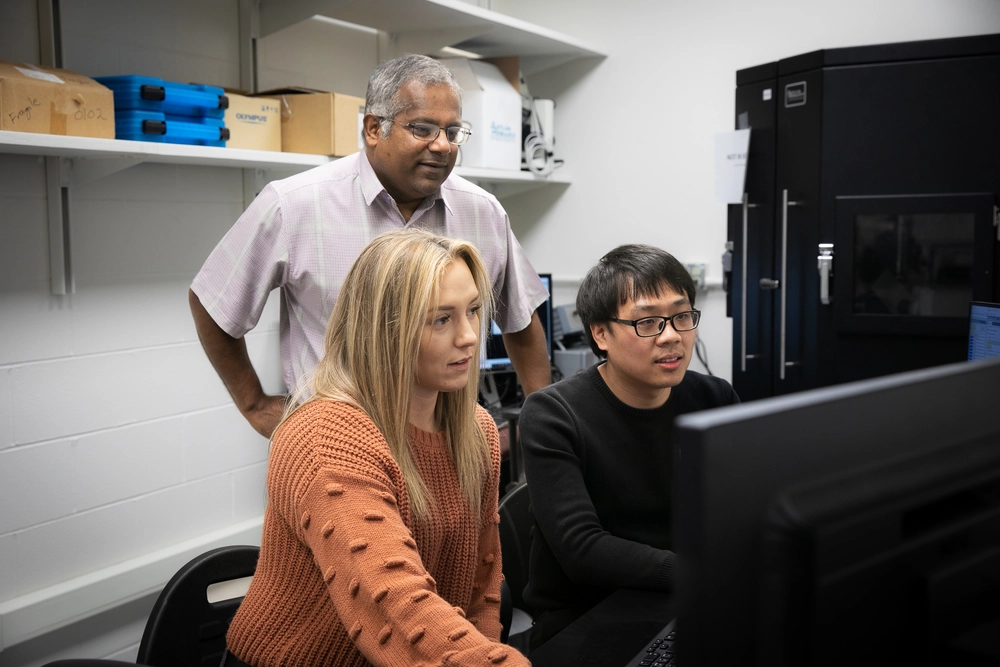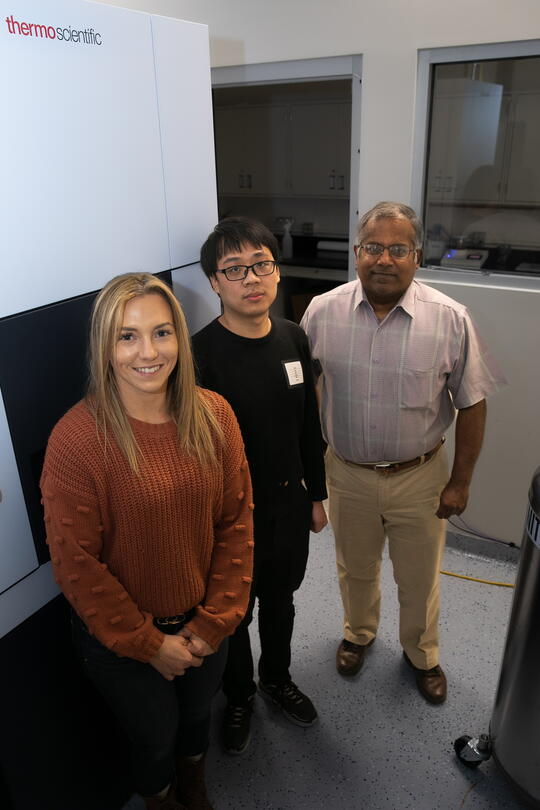
Imagine walking into a bakery, ready to satisfy your chocolate craving. You walk up to the counter, peer in through the glass, and point out a cookie in the front that you’d like to order. But then, as the tongs pull the chunky chocolate chip cookie back, you spot something even better behind it: a double fudge brownie topped with chocolate ganache.
Researchers at the University of Illinois Urbana-Champaign have found their own sweet surprise thanks to illuminating technology on campus. Their discovery of an unexpected reaction within a protein family was recently published in the journal Nature Chemical Biology, their findings could have dramatic implications for the development of future therapeutics.
“Our current study came about by accident, as do most interesting scientific outcomes,” Satish Nair explains. “It turns out that one protein, belonging to a large group of called the YcaOs, which is supposed to do one thing, actually does something no one had previously demonstrated. It cuts a peptide.”
Nair, the Gregorio Weber Chair and head of the Department of Biochemistry, knows it’s no accident that his lab had the means to see the protein reaction.
“We used cryoEM [cryogenic electron microscopy] to take pictures of this YcaO,” Nair explains. “The special thing about cryoEM is that with advances in technology and software, it can take pictures with atomic-level resolution. These pictures allowed us to figure out what the protein looked like, and more importantly, how it might carry out this peptide-cutting activity. There is also a biotechnology interest: we can use one protein to both modify a peptide and cut away the extraneous bits after its been modified.”

With cryoEM images providing a road map, the Nair Lab carried out biochemical studies to pinpoint the active site elements that enabled the unusual peptide cutting activity in ribosomal peptide biosynthesis. The lab demonstrated that this particular YcaO protein (MusD) is able to cut a peptide using a molecule called ATP as a co-factor. Because the reaction is not normally associated with members of the YcaO protein family, the Nair Lab is now exploring and predicting other examples of YcaOs that can also cut peptides.
The YcaO protein family is found in throughout nature, including in marine bacteria where it can make a class of antibiotics. With the growth of genome sequencing data, it is now possible predict with more certainty whether a given bacterial species has the genetic ability to create a new natural product. Natural products have played crucial roles in the development of cancer treatments, antibiotics, anti-viral treatments, and blood pressure reducers.
“More than half of the current drugs we use are derived from natural products, so this is an area of great interest,” Nair says. “There is a great deal of biotechnological interest in YcaOs and other enzymes that can modify peptides to make them more ‘drug-like.’ So, if we have enough of these tools available, we can use them to make molecules that are not found in nature.”
The Nair Lab has a hunger for more sweet surprises, and the Materials Research Laboratory’s menu is hitting the spot.
"Having the Glacios [Cryo Transmission Electron Microscope] on campus has opened the floodgates for new projects that were, before now, not feasible on the UIUC campus," MRL research scientist Kristen Flatt, PhD, says. "Staff at MRL are always happy to work with our users to determine the best techniques for their studies.”
“The beauty of cryoEM is that you don’t necessarily have to be an expert to get answers,” Nair enthuses. “The staff at MRL are the experts and they are excellent at helping researchers. So now, we and the larger community at Illinois, can focus on studying systems that were previously thought to be ‘too complicated’ or ‘too large’ to study using existing methods.”
As the Nair Lab continues to map out and visualize proteins, the lab’s researchers are excited for future so-called ‘accidents’ to turn into full-blown breakthroughs that advance the medicinal field.


